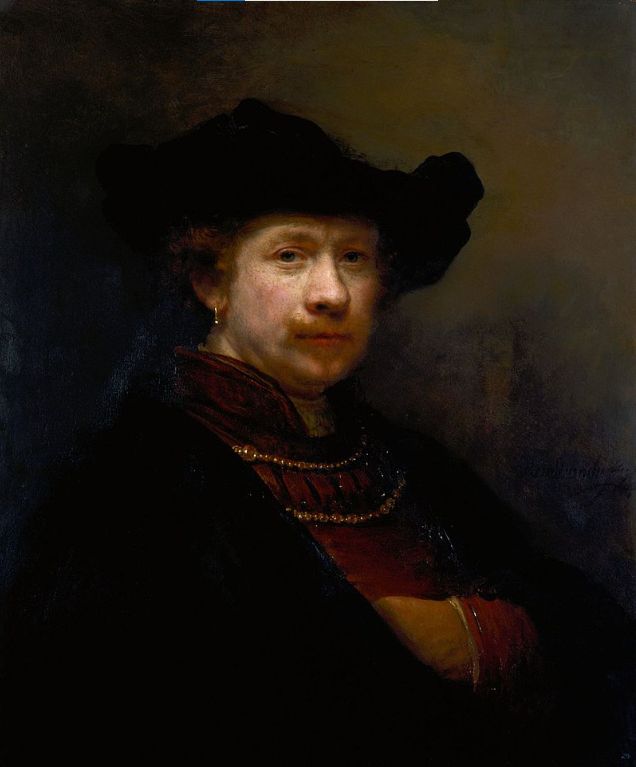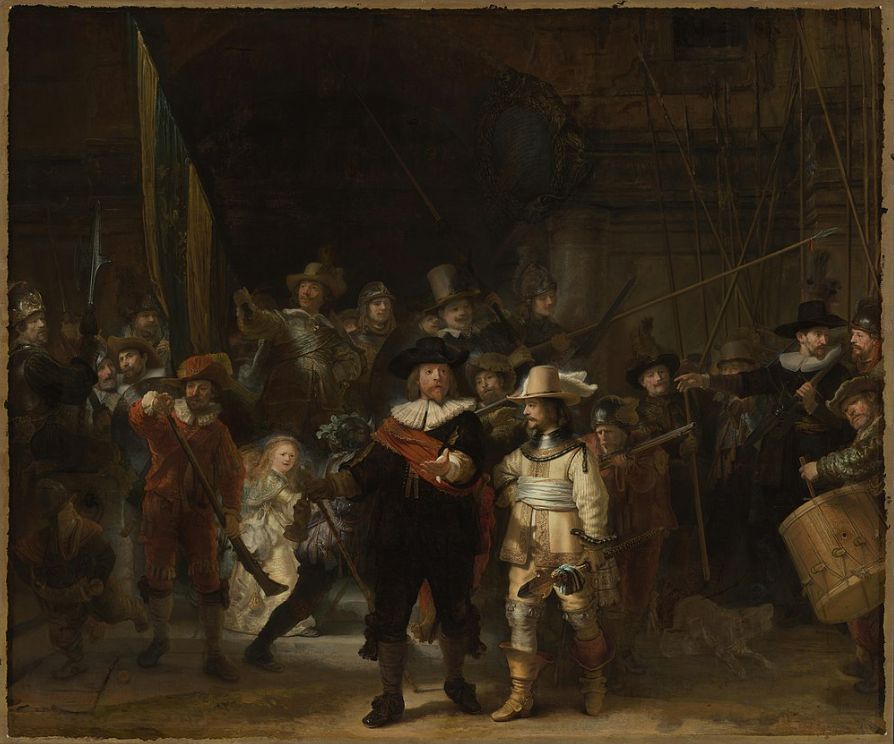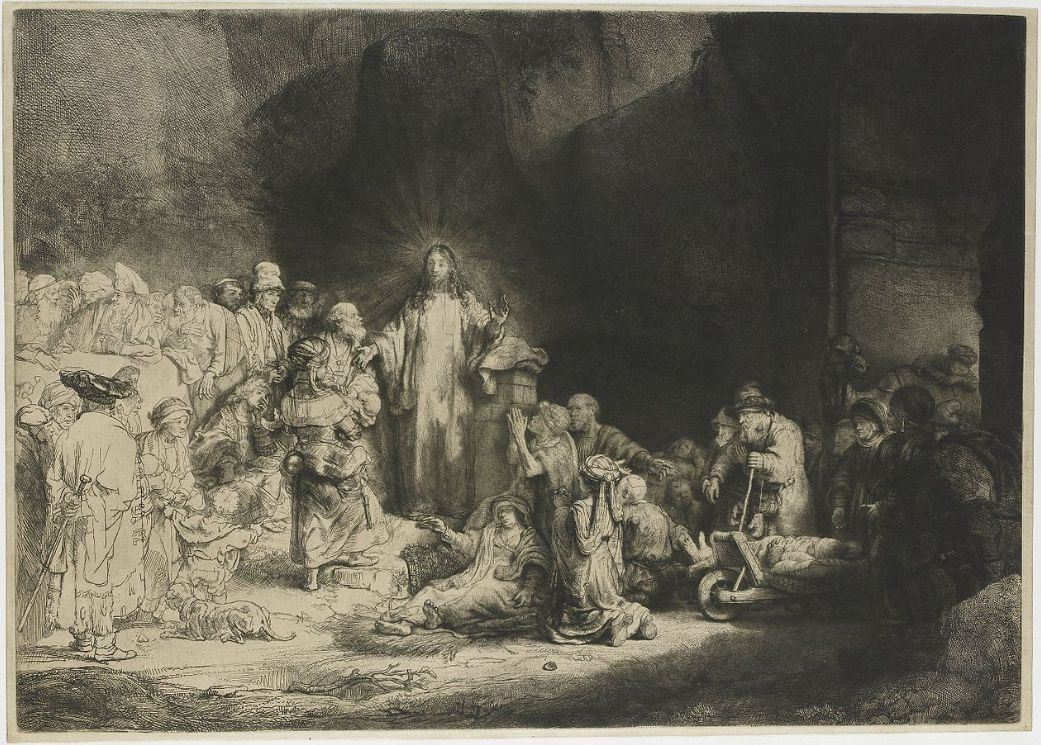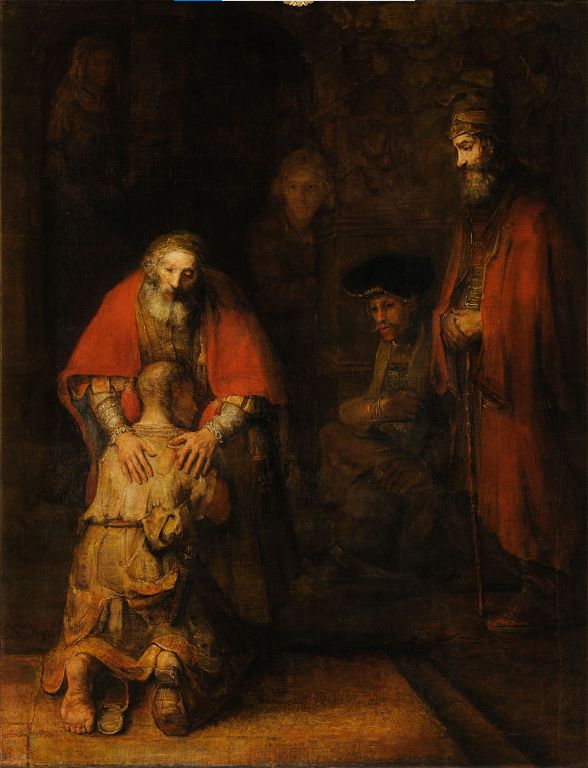In the 17th-century Dutch art scene, Rembrandt Harmensz van Rijn emerged as a brilliant star with his unique use of light and shadow and profound emotional expression. Not only was he one of the most important painters of his time, but he also became an eternal classic in art history. Rembrandt's life was filled with artistic brilliance and personal turmoil, and his works showcase not only his exceptional skill but also his deep emotions and profound insight into the human condition.

Rembrandt's early works primarily consisted of small, fluid Biblical scenes, with spiral compositions influenced by Rubens and incorporating the strong chiaroscuro of the Dutch Caravaggisti. These works demonstrate Rembrandt's mastery of composition and light, as well as his deep understanding and assimilation of influences from other artistic schools and artists. Throughout his life, Rembrandt was unusually receptive to the works of other artists, particularly Italian Renaissance painters and even non-European artists; he even imitated Mughal miniatures. However, he did not stop at imitation, instead transforming these influences into his unique style, reflecting his continuous artistic and spiritual development.
In 1631 or 1632, Rembrandt moved from Leiden to Amsterdam, a decision that marked a significant turning point in his artistic career. In this bustling commercial city, he quickly made a name for himself, especially in portrait painting. It was during this period that he created the work traditionally known as "The Night Watch." This group portrait does not depict a nocturnal scene or soldiers on guard but was commissioned by Amsterdam's civic militia, depicting them preparing for a ceremonial parade. Completed in 1642, at a time when Dutch militia groups functioned more like social clubs of men gathering to drink and eat. Frans Hals portrayed Haarlem's militia around a banquet table, but Rembrandt devised a more dramatic solution to integrate numerous figures into the composition. The figures are shown leaving the militia headquarters, possibly preparing for the ceremonial parade for Marie de' Medici in Amsterdam in 1638.

"The Night Watch" is renowned for its dynamic rhythm and complex light and shadow effects. The painting features the sound of drums, barking dogs, waving flags and spears, and children running among the militiamen. Through these elements, Rembrandt created a dynamic and dramatic atmosphere. The figures are life-sized, and the painting itself was originally larger, as it was cut down on all sides when moved to the city hall in 1715, causing asymmetry in the left background architecture. Rembrandt overcame numerous challenges, creating an exciting atmosphere through rich light and shadow, bright and ochre colors, contrasting poses, gestures, and facial expressions, guiding the viewer's gaze in a complex space.
The focal points of the composition are the captain, dressed in black with an orange sash, and the lieutenant, dressed in lemon yellow and shining brightly. Captain Frans Banning Cocq, a wealthy merchant, and the other militia members, likely from Amsterdam's upper social echelons, each funded the painting, with their contributions determining their prominence in the scene. While some of the older militiamen may have fought in the war against Spanish tyranny, the painting celebrates the Dutch Republic, its loose social structure, and the rewards of private enterprise. Rembrandt spared no effort in creating a convincing illusion of reality, making the poised, self-satisfied citizens appear as if they are about to step out of the frame to meet us.
"The Night Watch" has long been regarded as Rembrandt's crowning achievement. However, following this peak, his fame and fortune began to decline. With fewer portrait commissions, he turned to portray people from his surroundings, including himself. No artist before him had painted self-portraits as frequently. From the 1620s until the end of his life, he created hundreds of self-portraits in oil and etching, forming a unique painted autobiography, though this was not his original intention. These portraits were likely exercises in depicting figures and expressions, with collectors buying them without knowing who they represented. He portrayed himself in various roles: rebellious youth, middle-class citizen, armed knight, eccentric in dazzling Eastern attire, reveler, saint, and sage. In some roughly painted but striking self-portraits with broad faces and bulbous noses, Rembrandt depicted himself as an artist, including one created after 1656, during his financial ruin. With a head of white hair, he is shown deep in thought, standing resiliently despite life's hardships. He is calm and selfless, seemingly embracing the belief of Arnold Geulincx that the mind observes the body rather than being stimulated by or driving it.
Beyond his talent for portraits, Rembrandt also saw himself as a religious painter, not in the sense of prayerful images, but in interpreting sacred themes. Although a Calvinist, he was connected to the Mennonite community in Amsterdam, known for their pacifism and rejection of authority outside the Bible. These ideals are reflected in works like "Christ Healing the Sick," also known as "The Hundred Guilder Print," named after its price based on the best print runs of Rembrandt's time. Despite using Baroque compositional methods, its spirit is far removed from Baroque altar paintings or the fervor of Counter-Reformation art, like Rubens' "Miracles of St. Francis Xavier." Both have complex figure compositions, but Rembrandt's narrative is one of spiritual healing rather than physical.

In his late work "The Return of the Prodigal Son," Rembrandt's broad and thick brushstrokes showcase his undiminished ability to create tangible realism. The exhausted prodigal son kneels on the ground, his weary body palpable under tattered clothes, while the father's old hands rest heavily on his son's shoulders. The father's crimson and gold garments exude inner warmth in dim tones. Rembrandt focused on the relationships of the main figures, bathing them in mysterious, supernatural light, maintaining absolute tranquility by avoiding emotional display or action.

During the final phase of his career, Rembrandt continued to create stunning religious paintings with broad, thick strokes, capturing the spiritual depth and emotional complexity through his use of light and shadow. Despite financial hardships in his later years, he never ceased creating, leaving behind a vast legacy of artistic treasures. His art reflects not only technical excellence but also a profound understanding and empathy for the human condition. Rembrandt's work is not just a showcase of his personal talent but a vivid portrayal of the human spirit, making his art resonate deeply with viewers even centuries later, providing profound artistic enjoyment and spiritual connection.